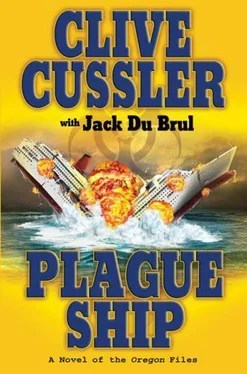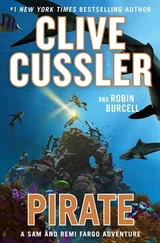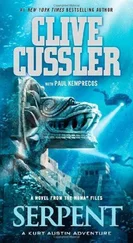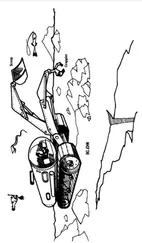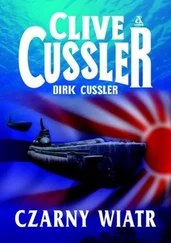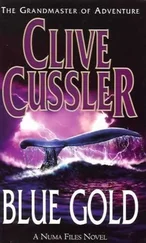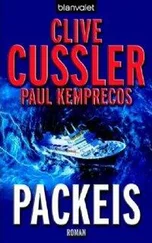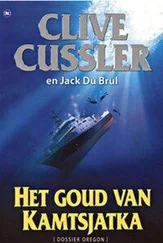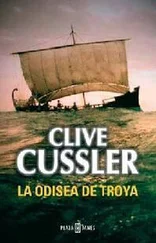Standing at the rail, Esteban made to wave at the Iranian vessel if any of her crew looked back, but it was as if they couldn’t distance themselves from the Norego fast enough. The captain scratched his ample belly and watched the patrol craft vanish into the distance. When it was no more than a speck, a second man emerged from the superstructure. He was older than Esteban, with a fringe of thinning auburn hair wreathing his otherwise-bald head. He had alert brown eyes and an easygoing demeanor, and while he’d done a good job keeping himself in shape, a slight paunch pressed at his beltline.
“The microphone in your office needs to be replaced,” he said without preamble. “You all sounded like cartoon characters sucking helium balloons.”
The captain took a moment to pluck wads of medical gauze from behind his molars. The fleshiness around his cheeks vanished instantly. He then peeled off the brown contact lenses to reveal startlingly blue eyes. The transformation from a down-on-his-luck sea dog into a ruggedly handsome man was completed when he removed his cap and dragged the greasy wig from his head. His hair was naturally blond, and he kept it trimmed to a long crew cut. The stubble was his own, and he couldn’t wait to shave it off, but that wouldn’t come until they had cleared out of Iranian waters just in case he had to play Ernesto Esteban, master of the MV Norego , again. “Alvin, Simon, and Theodore, that’s us,” Juan Rodriguez Cabrillo said with a grin.
“I heard you had to hit the panic button.”
There were hidden controls under the desk in the office that Cabrillo could use in a variety of situations.
One of them summoned Eddie Seng, who’d been standing by to play the role of an ill-fated engineer, and activated a pump in the plumbing below the nonworking toilet. The pump made the commode erupt like a volcano. Chemicals added to the water furthered the illusion by creating a noxious smell.
“Ensign Ghami wanted to play Sherlock Holmes and have a look around. I had to discourage him,” Cabrillo said to Max Hanley, vice president of the Corporation, of which Juan was the chairman.
“Think they’ll come back?”
“If we’re here in the morning you can bank on it.”
“Then I guess we should make sure we’re not,” Hanley replied with a devilish look in his eye.
The two men entered the superstructure. Juan led them to a utility closet packed with mops, broom, and cleaning supplies that apparently had never been used. He worked the handles of a slop sink as though he was dialing a safe. There was a distinct click, and the back wall popped open to reveal a richly carpeted hallway beyond. Gone were the utilitarian metal walls and cheap linoleum. The hallway was paneled with dark mahogany, and chandeliers along the ceiling provided warm light.
Like the disguise Cabrillo had donned to fool the Iranian Navy, the Norego wasn’t what she seemed. In fact, that wasn’t even her name. By transposing the metal letters held to her bow and stern by magnets, the crew had created the Norego from her real name, Oregon .
Built originally as a lumber carrier, the vessel had plied the Pacific for nearly two decades, hauling Canadian and American timber to Japan and the other Asian markets. The eleven-thousand-ton freighter had served her owners admirably, but the ravages of time were getting to her. As with any older ship, she was nearing the end of her useful life. Her hull was starting to corrode, and her engines no longer worked as efficiently as when they were new. The owners placed advertisements in maritime trade magazines that they were interested in selling her for scrap, knowing their once-proud flagship would fetch a few dollars per ton.
At the time, Juan Cabrillo was starting the Corporation, and he needed a ship of some kind. He’d visited ports all over the globe, looking for the right one. When he saw pictures of the lumber hauler, he knew he’d found his freighter. He’d been forced to bid against three breaker yards, but he still managed to buy the vessel for far less than had he purchaced a newer ship. He had no interest whatsoever with the vessel’s cargo-hauling abilities. He wanted her for her anonymity.
The Oregon then spent the better part of six months in a covered dry dock in Vladivostok, going through the most radical refit in history. Without changing her outward appearance, the vessel was completely gutted. Her old diesel engines were replaced with the latest cutting-edge power plants. Using a process called magnetohydrodynamics, the engines employed supercooled magnets to strip naturally occurring free electrons from seawater to produce a near-limitless amount of electricity. That power was then fed into four aqua pulse jets that pushed water through a pair of gleaming vectored-thrust drive tubes at tremendous force. The technology had been tried on only a few vessels, and since the fire on an MHD-driven cruise ship called the Emerald Dolphin it had been banished back to laboratories and scale models.
At the speeds the vessel was now capable of, her hull had to be stiffened and reinforced. Stabilizing fins were added, and her bow modified to give her modest icebreaking abilities. Several hundred miles of wiring were run throughout the ship for her sophisticated suite of electronics, everything from military-grade radar and sonar to dozens of closed-circuit television cameras. Keeping tabs on the system was a Sun Microsystems supercomputer
Then came the weapons. Two torpedo tubes, a 120mm cannon that used the targeting system from an M1A1 Abrams main battle tank. She sported three General Electric 20mm Gatling guns, vertical launchers for surface-to-surface antiship missiles, and a slew of .30 caliber machine guns for self-defense.
All the weapons were cleverly hidden behind retractable hull plates, like the German K boats used during World War I. The .30 cals were tucked inside rusted oil barrels permanently affixed to the deck. With a flick of a button in the operations center, the barrels’ lids would pop open and the weapons would emerge, fired remotely by gunners safely inside the ship.
Cabrillo added other surprises, too. Her aft-most hold was converted into a hangar for a four-passenger Robinson R44 helicopter that could be hydraulically raised to the deck. Concealed doors where she could unleash all manner of small craft, including Zodiacs and a SEAL assault boat, were at her waterline, while, along her keel, two massive panels opened into a cavernous space called a moon pool, where a pair of mini-subs could be launched covertly.
As for the crew’s accommodations, no expense was spared. The passageways and cabins were as luxurious as any five-star hotel. The Oregon boasted probably the finest kitchen afloat, with a staff of cordon bleu-trained chefs. One of the ballast tanks along her flanks, designed to make the vessel appear fully loaded should the need arise, was lined with Carrara marble tiles and doubled as an Olympic-length swimming pool.
The workers who’d done the refit had thought they had been doing the job on behalf of the Russian Navy as part of a new fleet of covert spy ships. Cabrillo had been assisted in this ruse by the commander of the base where the dry dock was located, an eminently corruptible admiral whom Juan had known for years.
The money to start the Corporation and pay for the conversion of the Oregon had come from a hidden Cayman Islands bank account that had once belonged to an assassin-for-hire Cabrillo had taken care of for his former employer, the Central Intelligence Agency. Technically, the money should have reverted to the CIA’s black budget, but Juan was given tacit approval to fund his enterprise by his immediate superior, Langston Overholt IV.
Cabrillo had been contemplating leaving the CIA for a short while when Saddam Hussein invaded Kuwait on August 2, 1990, and caught everyone at Langley completely unaware. Central Intelligence had fought the Cold War for so long that when the Berlin Wall came down and the Soviet Union imploded, they weren’t ready for the regional flare-ups that Juan had known would follow. The Agency’s corporate culture was too entrenched to see the looming danger. When Pakistan tested its first nuclear bomb, the CIA learned about it from news broadcasts. Cabrillo felt the CIA’s inflexibility was blinding them to how the world was reshaping itself after so many years of being dominated by two superpowers.
Читать дальше
